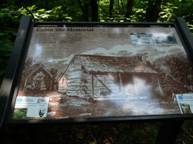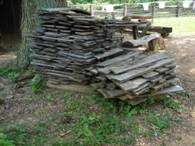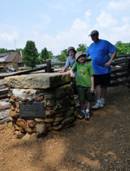Locations | Resources | About | Materials
12. Lincoln Boyhood National Memorial
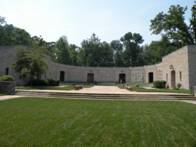 | 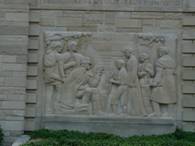 Lincoln in Kentucky |  Lincoln in Indiana |
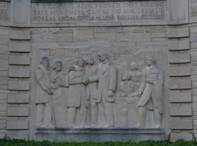 Lincoln in Illinois | 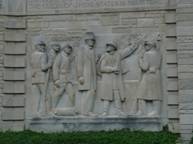 Lincoln in Washington | 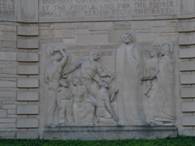 Lincoln’s legacy |
The centerpiece of the memorial is a one-story limestone ashlar memorial building completed in 1944, as seen above. There are five sculptured panels along the arc of the building by the noted sculptor, E. H. Daniels. This memorial portrays the steps in Abraham Lincoln’s life that progressively brought him from a cabin to the White House. The nine inscriptions above the sculptured panels were selected from Lincoln’s writings to illustrate some of the beliefs he held.
 | Mike Capps, National Park Service Ranger at the Abraham Lincoln Boyhood National Memorial, shared many stories and realities about the life of Abe from age 7 to 21, his time in Spencer County, Indiana. |
 | 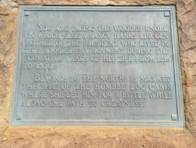 | Directly across from the memorial building, a long lawn commemorates the 200th anniversary of Lincoln’s birth date and recognizes the country’s veterans. Also, this is the tallest flagpole in the state of Indiana. |
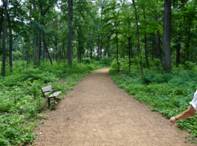 |  |  |
The beautiful, wooded setting of the Abraham Lincoln Boyhood National Memorial reflects a similar landscape as to when young Abraham played, worked, and explored during his childhood. Walking trails are well traveled; maps of the Park are easy to read. Upon the groups visit, the weather was in the upper 90’s with approximately 80 percent humidity. Everyone needed to rest occassionally and to drink lots of water.

In 1917, Spencer County’s centennial commission requested the assistance of older residents of the county in determining the exact location of Thomas Lincoln’s cabin. Twenty such residents assembled on the historic property and pointed to a site they believed to be correct. A marker was erected on the site on April 28, 1917. Placement of the bronze cabin site memorial was a significant action taken in the memorializing of Abraham Lincoln.
|



